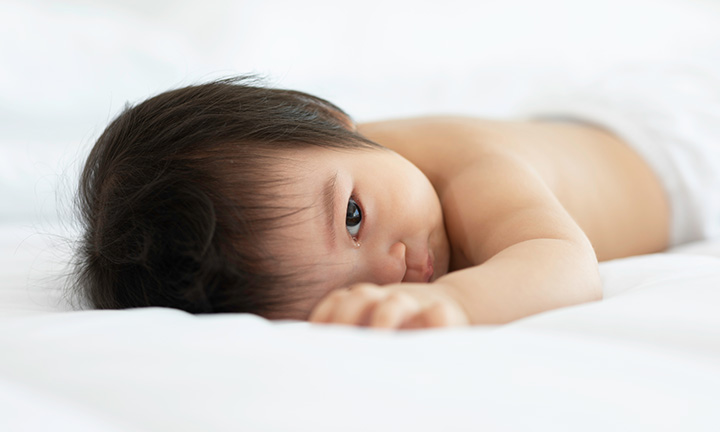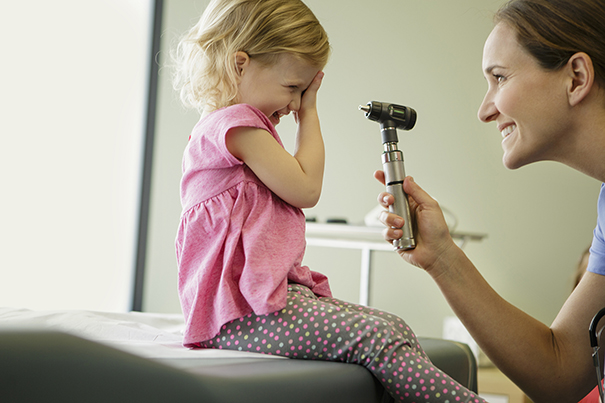
Hives on Babies - What You Need To Know
Rashes, little red bumps and hives are common in newborns and babies. The majority are harmless and disappear on their own. It’s natural to wonder what you can do to help them and when you should call your child’s GP. Read the following article to learn about the symptoms, causes and treatment of hives in babies and when a doctor can step in and help.
What Are Baby Hives?
Referred to as urticaria in the medical world, hives are raised patches that appear in many shapes and sizes either in one area or spread over a large area. They can affect anyone, from babies to adults. Rashes are common and usually harmless in babies and young children. Luckily, hives on babies tend to go away on their own within a few days and are usually not a cause for concern. Read on to find out why hives appear and what types of hives might affect your baby.
What Causes Hives in Babies?
Whether your baby is 1 month or 1 year old, it’s completely normal for them to experience hives on their face or body from time to time. Getting down to the root cause is not always an easy task; in many cases, no obvious cause can be found. However, as hives are caused by the release of histamine, they may be attributable to the following reasons:
Your child’s GP will usually be able to diagnose hives by taking a look at the rash. They may also ask some questions about your baby to determine what triggered the symptoms.
Viral and Bacterial Infections
Many cases of hives in children are caused by a viral infection. If your little one is battling a virus, they may find hives appearing all over their body. This may be accompanied by other symptoms of a virus, including fever, coughing or diarrhoea. If your child’s hives are from a virus, they are typically acute and will resolve themselves within a matter of days. Sometimes hives may be due to other bacterial infections such as mycoplasma or streptococcus, which may require treatment with antibiotics.
Allergies
As mentioned above, allergies may be a trigger behind hives in your baby. Your little one may be more susceptible to hives if they have an allergy – a condition in which the immune system reacts to a substance as though it’s harmful. Babies can experience hives when having an allergic reaction to something specific, such as
An isolated episode of hives may be due to an allergy, but unless there is a clear indication that it was a particular food or pollen, then an allergy is not usually the cause. The general rule of thumb is that hives should follow within one hour of eating a food if the food in question is responsible.
If the hives persist for more than one day, it’s very unlikely they were caused by an allergy. In this case, they are most commonly caused by viral infections. Likewise, chronic hives that occur frequently over a period of several weeks or months are very rarely attributable to an allergy. If your little one does experience chronic hives, it is important to speak to their GP in order to find the root cause. We also recommend taking your child to A+E if they exhibit any signs of a more serious allergic reaction, such as trouble breathing, fainting and swelling.
External Irritants and Other Potential Causes
There are a number of other reasons your baby may experience hives, including exposure to hot or cold temperatures or direct sunlight. If you only notice hives appearing in one isolated place as opposed to your child’s entire body, this can often be attributed to basic skin irritation from something touching your baby. Irritation can be caused by
This type of hives often gets better quickly, with the rash typically disappearing within a few days.
Symptoms of Baby Hives
By this point, you may be asking yourself what to look out for? Hives on babies look the same as those experienced by kids and adults of any age. They may have the following characteristics:
They may also:
As hives can often come and go, moving from one area of the body to another, it’s important to pay attention to when they start and how long they last. Keep in mind that if the hives in your baby are due to an allergy, they will appear within an hour and resolve quickly. On the other hand, if your child experiences hives for longer than six weeks, they may be a chronic issue. If any of the following occur, it may be best to contact your child’s GP:
The GP should be able to help you determine the best path of action and give you advice on treatment. However, there are certain, very rare scenarios that mean you should call 999 instantly or go to A&E right away. These include:
These symptoms indicate that your child could be having a serious allergic reaction (anaphylaxis) and may require immediate treatment in the hospital.
Treatments and Home Remedies for Hives in Babies
As a parent, it’s only natural to wonder what you can do to help when you see your child breaking out in hives. Luckily, the vast majority of cases disappear quickly without needing any intervention. However, your child’s GP may recommend some effective home remedies to help treat hives in babies. These may include:
FAQS AT A GLANCE
Your baby may experience one of the two types of hives: acute and chronic. Acute hives typically clear up without any intervention required within a matter of days, whereas chronic hives often return over the span of months and years.
The Bottom Line
Alarm bells may start to ring when your child first develops hives, but keep in mind that they are completely normal and usually go away on their own. They can appear anywhere on the body and range in size from a few millimetres to the size of a hand. It’s important to get down to the root cause of your child’s hives in order to adequately treat them. Common causes include viral infections, allergies and touching something that irritates their skin. Get in touch with your child’s GP if your little one’s hives appear to be chronic, i.e. come and go and/or last over six weeks, or if they report feeling unwell or have a temperature. If you suspect an allergic reaction or anaphylactic shock, please contact 999 immediately or go to A&E. Hives are a common occurrence among babies and typically nothing to worry about. As they grow, you may want to learn more about the developmental milestones they will reach and track your baby’s growth to watch them flourish!
The information in this article is based on the expert advice found in trusted medical and government sources, such as the National Health Service (NHS).The content on this page should not replace professional medical advice. Always consult medical professionals for full diagnosis and treatment.
Read more about Baby
Related Articles
Join Pampers Club and get:










